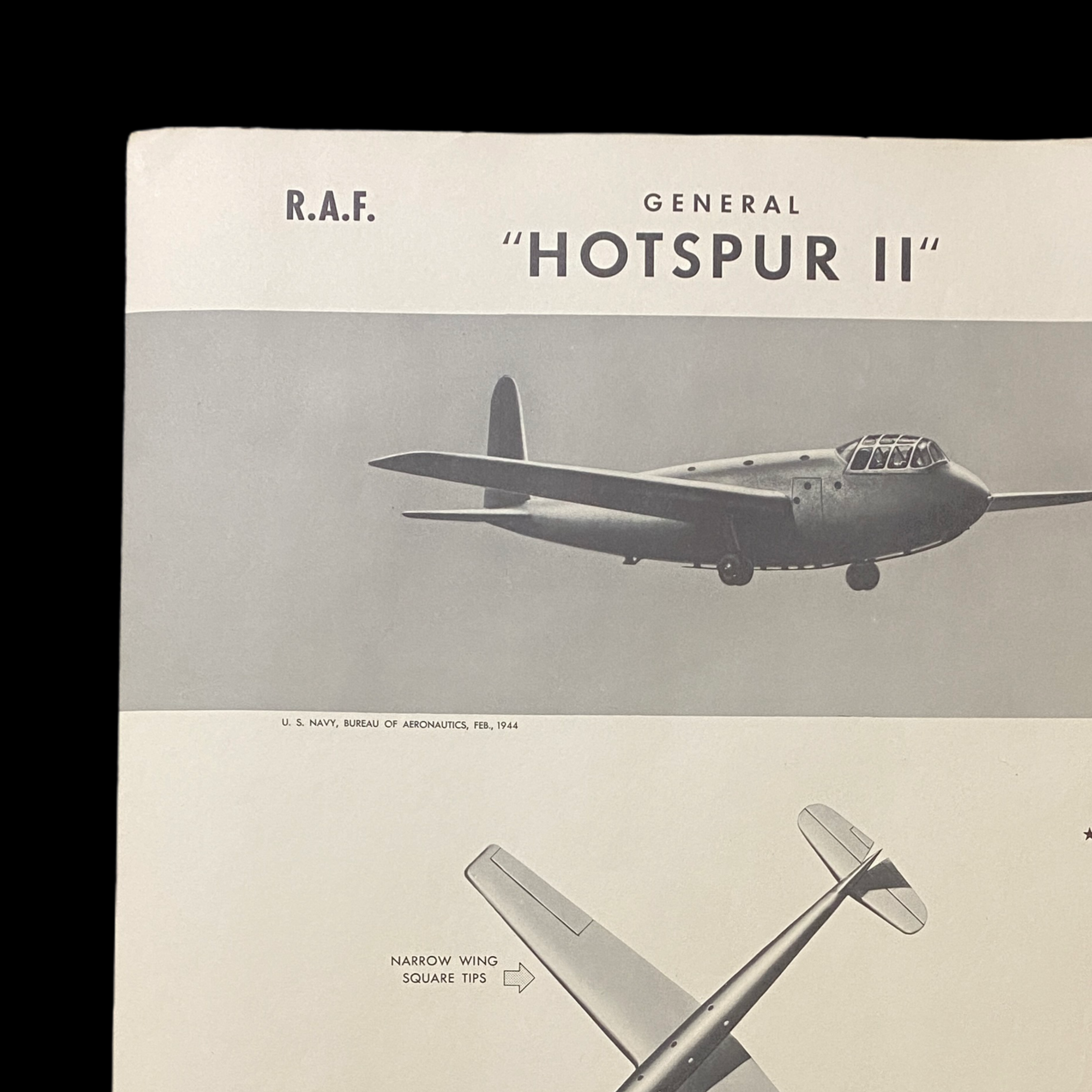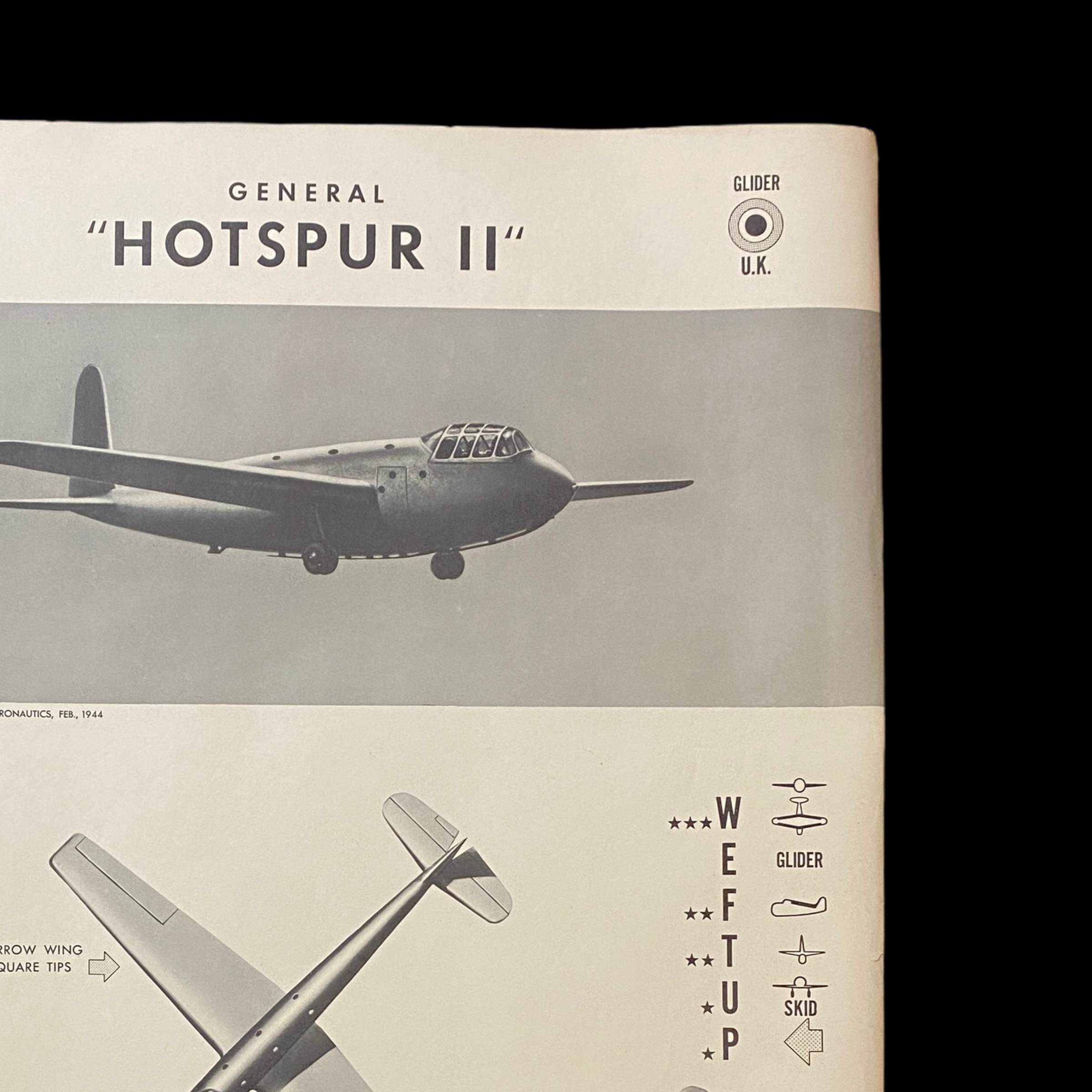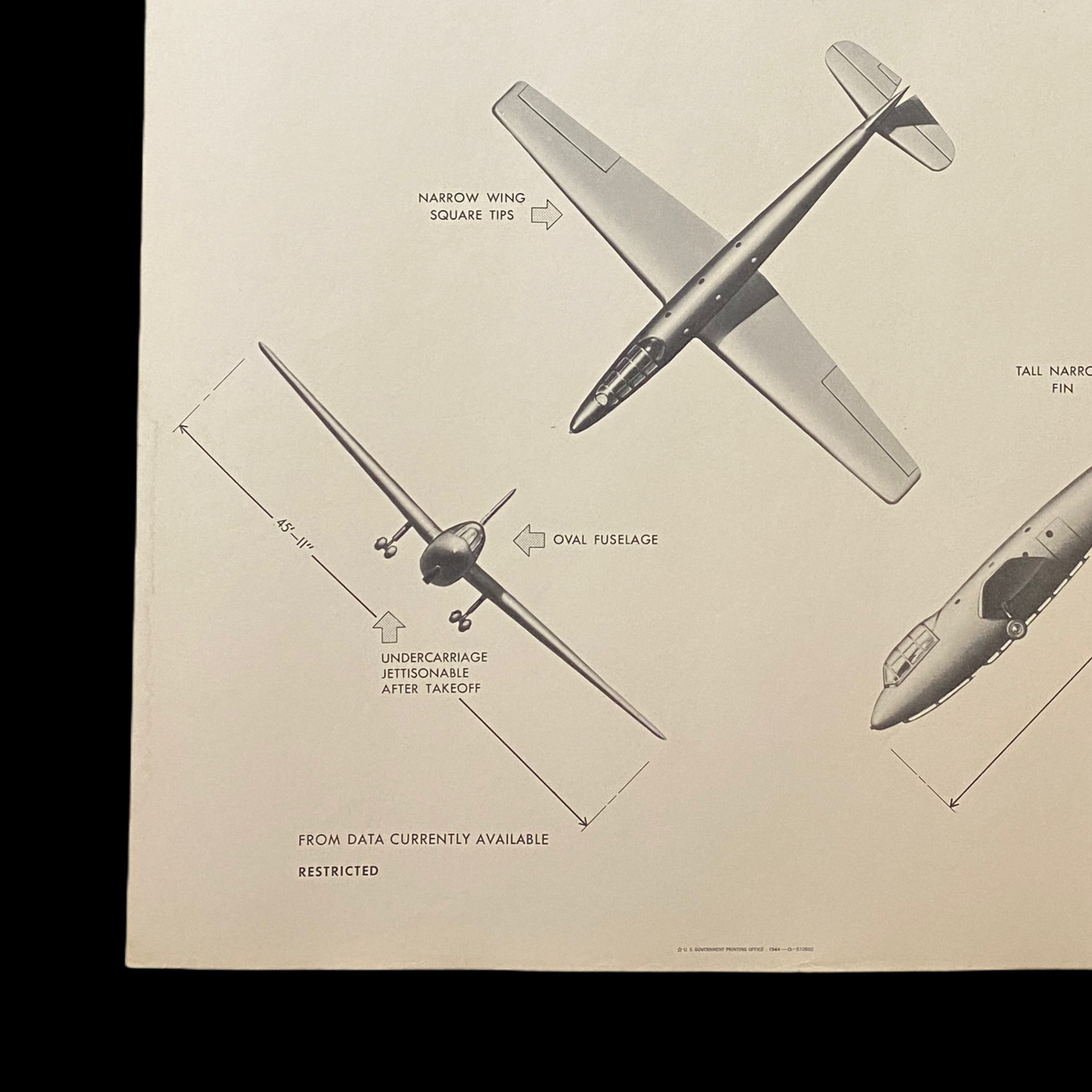WWII 1944 United Kingdom Royal Air Force British Airborne Glider "General Hotspur II" W.E.F.T.U.P. ID Poster






WWII 1944 United Kingdom Royal Air Force British Airborne Glider "General Hotspur II" W.E.F.T.U.P. ID Poster
Size: 19 x 25 inches
This original ‘RESTRICTED’ aircraft identification poster was published by the U.S. Naval Aviation Training Division Feb 1944. This poster was posted as a training tool as well as an in theater ID poster to help U.S. and other Allied pilots, bomber crews and Naval personal to identify Allied and enemy aircraft. W.E.F.T.U.P. or Wing, Engine, Fuselage, Tail, Undercarriage, Peculiarities was a system set up for the purpose of aircraft identification and recognition.
World War II saw some of the first introduction of these aircraft ID poster to prevent friendly fire and more accurate plane recognition in combat. It was believed these posters alone could save countless lives from friendly aircraft-on-aircraft or friendly anit-aircraft fire. These posters also could cut down precious second pilots, bomber gunners, and naval gun crews would have to ID a plane flying towards them intern saving their lives by shooting first.
Each poster provides the silhouettes, dimensions, and relevant information to educate both air and ground personnel in aircraft identification. Immediate identification of aircraft, friendly or not, was essential in order for the observer (whether in the air e.g., pilot, gunner, or patrol observer, or on the ground, e.g., anti-aircraft crew) to determine his next course of action (e.g., acknowledge, attack, evade, or report). Each poster details a large clean sky and background image of the specified aircraft located as the main top imagine on the poster. It also contains important ‘peculiarities’ such as where certain gun emplacements are located, other special aircraft features, as well as wing and length measurements.
General Aircraft GAL.48 Hotspur:
The General Aircraft GAL.48 Hotspur was a military glider designed and built by the British company General Aircraft Ltd during World War II. When the British airborne establishment was formed in 1940 by order of Prime Minister Winston Churchill, it was decided that gliders would be used to transport airborne troops into battle. General Aircraft Ltd were given a contract by the Ministry of Aircraft Production in June 1940 to design and produce an initial glider for use by the airborne establishment, which resulted in the Hotspur.
Conceived as an "assault" glider which necessitated a compact design and no more than eight troops carried, tactical philosophy soon favoured larger numbers of troops being sent into battle aboard gliders. Due to this, the Hotspur was mainly relegated to training where it did excel and it became the basic trainer for the glider schools that were formed.
The Hotspur was named after Sir Henry Percy, a significant captain during the Anglo-Scottish wars who was also known as "Hotspur".